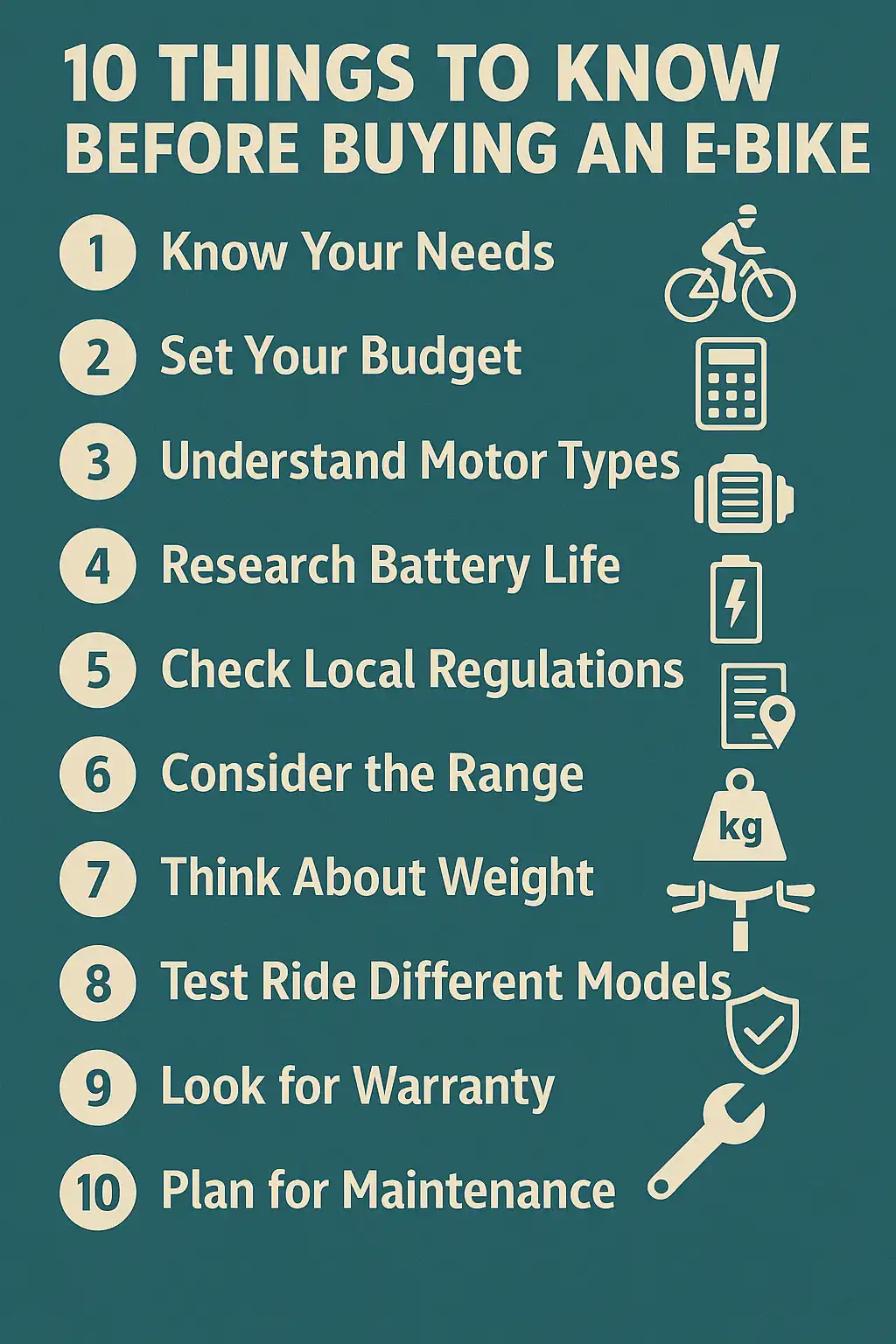Electric bikes are transforming how people commute, explore, and enjoy the outdoors. Whether you’re looking to upgrade your transportation method or join the e-bike revolution for recreation, there’s more to it than picking a model off the rack. Before you hit the road (or trail), here are ten important things to know before buying your first electric bike.
- Understand the Different Classes
Electric bikes are generally divided into three classes:
- Class 1: Pedal-assist only, with no throttle, and a max assist speed of 20 mph.
- Class 2: Throttle-assisted up to 20 mph.
- Class 3: Pedal-assist only but up to 28 mph. Understanding these classes will help you determine what’s legal in your area and what suits your riding style.
- Know Your Riding Purpose
Are you commuting, cruising around town, or going off-road? E-bikes come in various designs: commuters, cruisers, mountain bikes, and cargo bikes. Your intended use should guide your decision. - Battery Range Matters
Battery range is one of the most important specs to consider. Depending on terrain, rider weight, and power level used, a full charge can take you anywhere from 20 to 70+ miles. Make sure your e-bike can handle your typical ride length. - Motor Placement Affects Performance
Mid-drive motors (located at the crank) offer better weight distribution and climbing power. Hub motors (in the wheel) are often quieter and more budget-friendly. Each has pros and cons depending on your needs. - Check the Weight
E-bikes are heavier than traditional bikes due to the motor and battery. Some models can weigh 50–70 lbs. Consider how you’ll transport or store your bike, especially if you live in an apartment or plan to lift it into a vehicle. - Look for Quality Brakes and Suspension
Because e-bikes move faster and weigh more, solid braking power is essential. Hydraulic disc brakes are common and preferred. Suspension (especially front forks) is useful if you’ll be riding on rough or uneven terrain. - Throttle vs. Pedal-Assist
Some e-bikes come with a throttle feature (like a moped), while others rely solely on pedal-assist. Decide which mode better suits your riding style and how much control or physical effort you want. - Regulations Vary by Location
Not all e-bikes are street-legal everywhere. Some trails and cities restrict certain e-bike classes. Check local laws before riding. - Consider Long-Term Maintenance
E-bikes need regular tune-ups like any bike, but the electronics add another layer. Make sure your local bike shop services electric bikes—or choose a brand with solid customer support and parts availability. - Test Ride Before You Buy
Nothing beats a hands-on test ride. Comfort, handling, motor responsiveness, and fit can vary widely. Many dealers and bike shops offer test rides to help you find the best match.
Final Thoughts
Buying an electric bike is an exciting step, and with a little preparation, it can be one of the most rewarding investments in your mobility and health. Keep these ten tips in mind to ensure you choose a model that fits your lifestyle, budget, and riding preferences. Happy riding!

